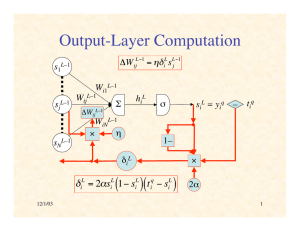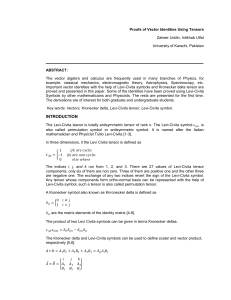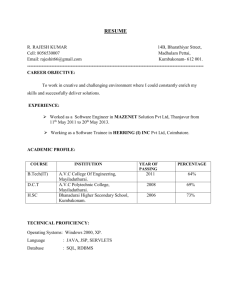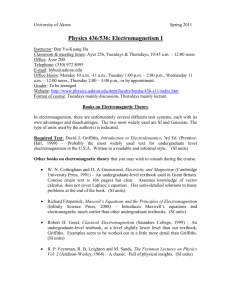(B x C) = B(A · C)
advertisement
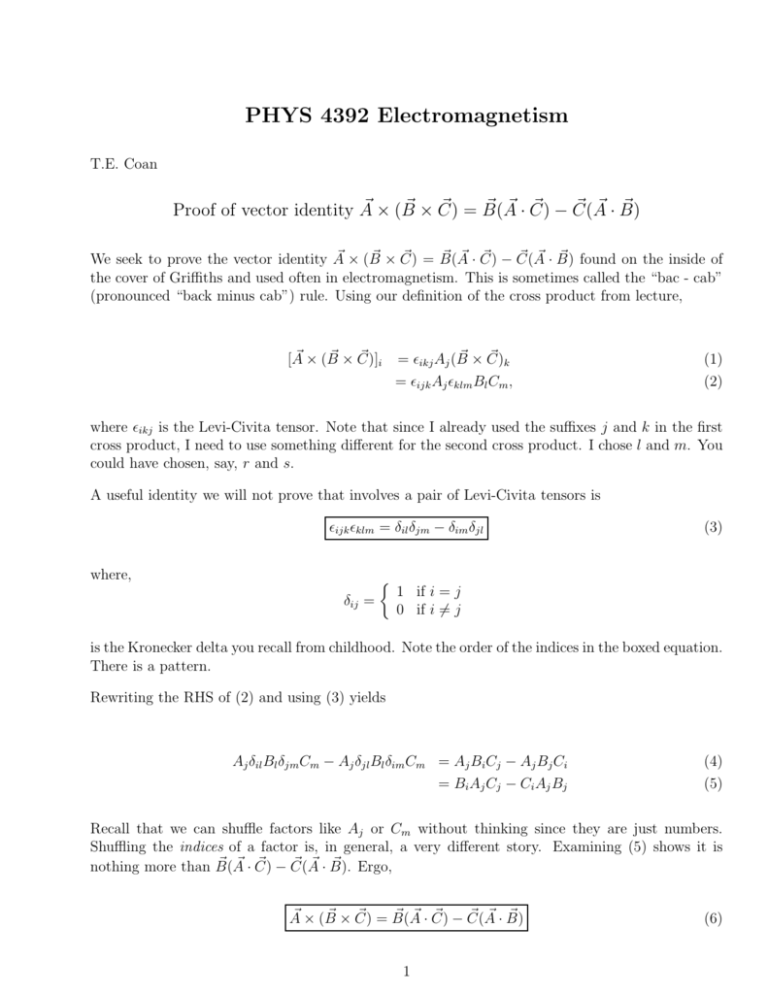
PHYS 4392 Electromagnetism T.E. Coan ~ × (B ~ × C) ~ = B( ~ A ~ · C) ~ − C( ~ A ~ · B) ~ Proof of vector identity A ~ × (B ~ × C) ~ = B( ~ A ~ · C) ~ − C( ~ A ~ · B) ~ found on the inside of We seek to prove the vector identity A the cover of Griffiths and used often in electromagnetism. This is sometimes called the “bac - cab” (pronounced “back minus cab”) rule. Using our definition of the cross product from lecture, ~ × (B ~ × C)] ~ i [A ~ × C) ~ k = ǫikj Aj (B = ǫijk Aj ǫklm Bl Cm , (1) (2) where ǫikj is the Levi-Civita tensor. Note that since I already used the suffixes j and k in the first cross product, I need to use something different for the second cross product. I chose l and m. You could have chosen, say, r and s. A useful identity we will not prove that involves a pair of Levi-Civita tensors is ǫijk ǫklm = δil δjm − δim δjl (3) where, δij = 1 if i = j 0 if i 6= j is the Kronecker delta you recall from childhood. Note the order of the indices in the boxed equation. There is a pattern. Rewriting the RHS of (2) and using (3) yields Aj δil Bl δjm Cm − Aj δjl Bl δim Cm = Aj Bi Cj − Aj Bj Ci = Bi Aj Cj − Ci Aj Bj (4) (5) Recall that we can shuffle factors like Aj or Cm without thinking since they are just numbers. Shuffling the indices of a factor is, in general, a very different story. Examining (5) shows it is ~ A ~ · C) ~ − C( ~ A ~ · B). ~ Ergo, nothing more than B( ~ × (B ~ × C) ~ = B( ~ A ~ · C) ~ − C( ~ A ~ · B) ~ A 1 (6)



